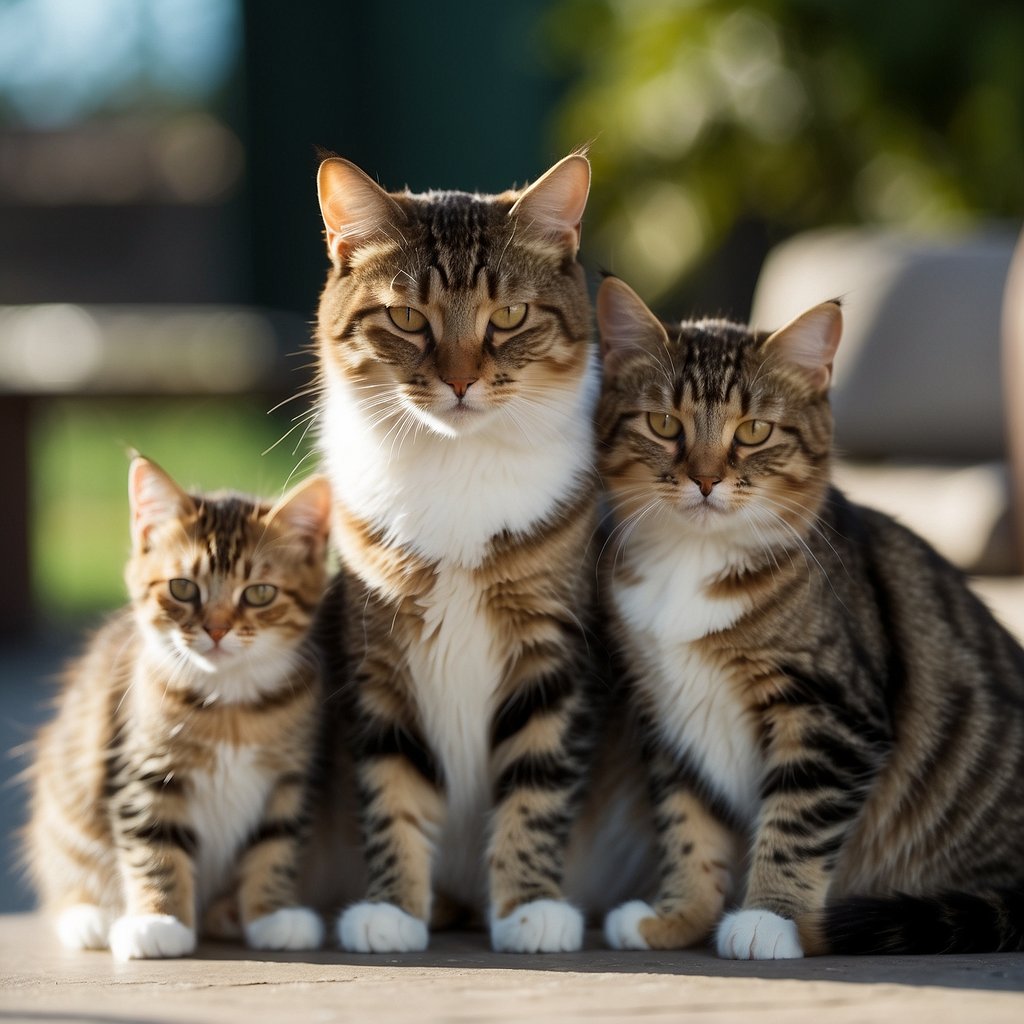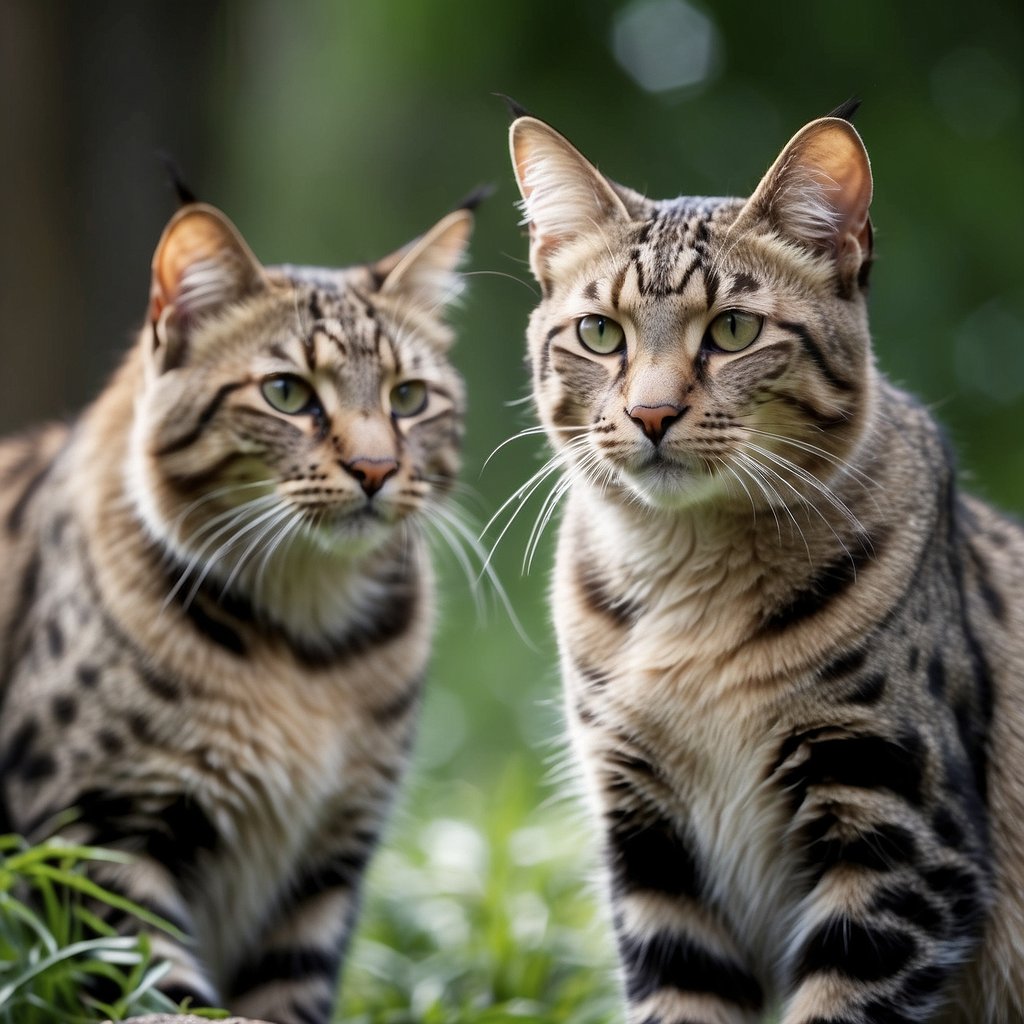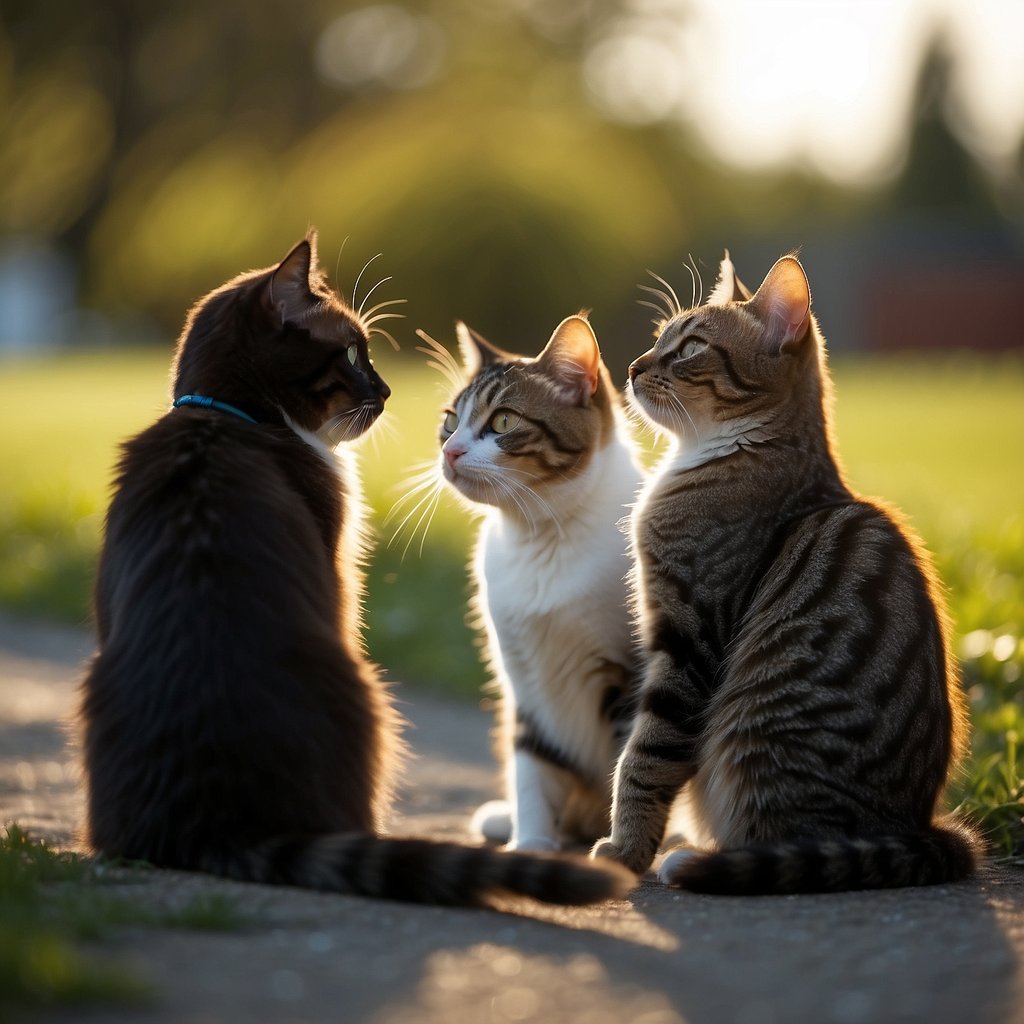
Understanding cat Social Dynamics
Understanding cat hierarchies and social structures offers fascinating insights into their behavior both in the home and the wild. While often perceived as solitary animals, domestic cats can exhibit complex social dynamics, particularly when they live in multi-cat households or as part of community cat colonies. Hierarchical dynamics play a significant role in how cats interact with each other, with dominant individuals asserting their status through various non-verbal cues and behaviors. This can be observed through subtle body language or more overt actions such as controlling access to resources like food, resting spots, or territory.
In feral cat populations, these social hierarchies are essential for maintaining order and reducing conflicts within the group. Territory is a critical element of cat social structures, where scent marking and vocalization are important tools for communication and establishing boundaries. Both domestic and wild cats use a range of vocal and body language signals to convey information about their intentions, mood, and social status. By understanding these social cues and interactions, cat owners and enthusiasts can better comprehend the complexities of cat behavior and social dynamics, which can lead to improved welfare and management of cats.
Key Takeaways
- Cat social behavior includes complex hierarchies often observed within multi-cat homes and colonies.
- Territoriality and communication are crucial for maintaining social order and reducing conflict among felines.
- Recognizing feline social cues can enhance the management and welfare of domestic and wild cats.

Cat Social structure Basics
Cat socialization involves understanding their communication methods, forming bonds, and recognizing the hierarchies they establish. This section explores these key factors in domestic and feral cat populations.
Understanding Feline Communication
Cats communicate using body language, vocalizations, and scent marking. A tail held high typically signifies confidence, while flattened ears may indicate aggression or fear. Vocalizations like purring or meowing can show contentment or a desire for attention, respectively. Cats utilize scent through rubbing and leaving facial pheromones to mark their territory and identify familiar objects or beings.
The Formation of Social Bonds
Cats form social bonds with humans and other cats through activities like grooming (allogrooming) and play behavior. Bonding can manifest in the creation of a bonded pair or group, revealing affiliative relationships. Kittens learn these social cues from their mother, fostering both sibling bonds and comfort with humans.
Social Interaction and Behavior
Positive behaviors, such as sleeping in close proximity or grooming one another (allogrooming), are signs of accepted social interaction among cats. Giving individual attention can foster confidence and influence a cat’s temperament, encouraging harmonious cohabitation within their group or with humans.
Development of cat Hierarchies
Hierarchies within feline groups often depend on age, sex, and dominance. Dominant cats exhibit more control over resources and may initiate grooming to reinforce their status. Periodic testing of the hierarchy occurs, which may involve subtle challenges or more overt displays like displacement at food dishes.
Territory and Resources
Territory is vital for cats; they establish territories and boundaries using scent and urine marking. The availability of resources such as food, water, and shelter (den, home range) influences their social structure. Environmental factors play a key role in the size and stability of their territories.
Conflict and Aggression
Conflict arises when resources are scarce or territories overlap. Aggression can include fighting, growling, hissing, and avoidance behaviors. This can lead to stress, which in turn can cause health problems. Cats manage conflicts through established social hierarchies and sometimes through the formation of truces or alliances.
Life in a Multi-Cat Household
In multi-cat households, it’s crucial to provide ample litter boxes, food bowls, water bowls, and cat beds. Scratching posts and hoarding toys can also mitigate conflict by allowing cats to express normal behaviors and establish their individual spaces.
cat Population Dynamics
Feral cat colonies are self-regulating social groups with complex structures. The reproductive status of members, whether spayed or neutered, affects their role within the colony. The presence of kittens can impact the dynamics, fostering a matriarchal structure and sometimes lead to communal care, known as a joint litter.
Reproduction and cat Social Structures
Cats’ social hierarchies are influenced by their reproductive behavior. For example, unneutered males may display increased aggression and urine marking to assert dominance. Meanwhile, females can show strong protective instincts toward their litters, affecting the overall social structure of the group.

Cat Hierarchical Interactions
Cat social structures are complex, involving various behaviors that establish and reinforce a hierarchy. These behaviors facilitate interaction, avoid conflict, and maintain the social order within cat communities.
Displays of Dominance and Submission
Dominant cats assert their status through body language, including erect posture and direct eye contact, while submissive cats may avert their gaze, crouch, or expose their belly. Such displays communicate positions within the hierarchy without the need for aggression.
Scent Marking Behaviors
Cats use scent marking to establish territory and signal social status. This involves rubbing their face against objects to leave pheromone markers, urine spraying, and scratching, which serve as clear indicators of a dominant individual’s presence within a social structure.
Physical Altercations and Their Meanings
While aggression can occur, physical altercations, such as fighting, growling, and hissing, are often last resorts used to resolve disputes over territory or hierarchy. These interactions may determine or reinforce the dominant and submissive roles among cats.
Roles of Sex and Age in cat Hierarchies
Dominance can be influenced by sex and age, with male cats (particularly toms) often being more dominant than females. Older cats typically occupy higher positions compared to younger individuals who may be testing the hierarchy.
Influence of Resources on Social Order
Proximity to critical resources, such as food sources and water bowls, is often controlled by more dominant individuals. This control reinforces their status and affects the overall social structure and territory dynamics.
Coping Strategies and Conflict Avoidance
In order to reduce conflict and stress, cats may develop coping strategies, like temporal partitioning of the territory or avoidance behavior, which help in maintaining a stable hierarchy and social balance.
Handling Introductions of New Cats
Introducing a new cat to an existing hierarchy requires careful management to minimize stress and avoid disturbance of established territories. Controlled, gradual introductions with supervision are crucial to foster bonding and reduce the likelihood of aggression.
Behavioral Signs of Hierarchical Changes
Changes within a cat group’s hierarchy can be detected by observing alterations in behavior, such as shifts in scent marking, changes in feeding order, or increased submissive behavior among previously dominant individuals. These changes may reflect a reorganization of the social dynamics and stress levels within the group.
Communication and Territory in Wild Felines

The complex world of wild felines is governed by intricate social structures and communication systems, crucial for establishing territories and maintaining order within various species.
Territorial Behaviors Among Wild Cats
Wild cats, ranging from the solitary bobcats to the social lions, display distinct territorial behaviors. Bobcats (Lynx rufus), for example, use scent marking and physical boundaries, such as scratches on trees, to delineate their ranges. Conversely, lions (Panthera leo), known for group living, defend their territory collectively, often engaging in intense confrontations to fend off rivals and secure hunting grounds.
Communication Methods in the Wild
Feline communication is multifaceted, involving vocalizations, body language, and scent marking. Cheetahs (Acinonyx jubatus) have a repertoire of vocalizations for different situations, while many feline species use scent-marking to relay information about their reproductive status and territorial claims without direct contact.
Social Organization of Different Species
Social structures vary widely among wild felines. Lions are renowned for their pride-based social system, where related females and offspring live cooperatively with a coalition of males. In contrast, the majority of felines, like cheetahs and bobcats, are usually solitary, coming together only for mating or rearing young.
Wild vs. Domestic: Understanding Behavior
Distinguishing the behaviors of wild felines from domestic cats unlocks insights into innate wild instincts. For instance, feral cats exhibit territoriality and social behavior that echo their wild counterparts, suggesting these traits are deeply rooted within the cat family.
Predatory Instincts and Territoriality
Hunter by nature, territoriality in wild cats is often tied to predatory instincts. A territory ensures adequate food supply. For instance, cheetahs, as specialized hunters, require large territories for hunting, whereas smaller species like the bobcats may have smaller ranges, but they are fiercely protective of their hunting areas.

cat Social Dynamics in Special Populations
In cat populations, social structures are influenced by factors such as spaying and neutering, living conditions, and individual health. These variables affect hierarchies and resource distribution, particularly in special groups like feral colonies and multi-cat households.
The Impact of Spaying and Neutering on Hierarchies
Spaying and neutering domestic cats often lead to a decrease in aggressive behavior related to mating. In a neutered population, the traditional dominance hierarchies based on reproductive status become less pronounced. Resources such as food and territory are still contested, but usually with less intensity.
cat social structure and Feral Cat Colonies
Feral cat colonies typically organize around a matriarchal structure, where one or more female cats lead. These colonies establish territories, and access to resources is influenced by a cat’s position within the social order. A clear hierarchy is often observed, with dominant cats having preferential access to food and shelter.
Adaptive Behaviors in Multi-Cat Environments
In environments where multiple cats cohabit, such as shelters or households, adaptive behaviors emerge to minimize stress and conflict. Cats may establish a feeding hierarchy or a spatial distribution to avoid confrontations. Environmental enrichment can play a significant role in reducing stress in these settings.
Health Issues Linked to Social Stress
Chronic stress in hierarchical cat societies can lead to health problems such as urinary and digestive issues. The lower-ranking individuals, often the ones with limited access to resources, are typically more susceptible to these stress-induced health issues.
cat Social Strategies of Aging and Disabled Cats
Older and disabled cats may adapt their social behaviors to cope with the challenges of their physical limitations. They may become more solitary or select social interactions carefully to avoid aggression. These cats use non-confrontational strategies to maintain access to resources with minimal stress.
Frequently Asked Questions
In exploring the social dynamics of cats, frequently asked questions reveal key insights into hierarchies and group interactions among these animals.
How is a hierarchy established among cats living in the same household?
A hierarchy among cats in the same household is typically established through a combination of age, personality, and past experiences. Senior cats or those who are more confident may assume higher ranks, while younger or more submissive cats may fall lower in the social order.
What are the signs of dominant behavior in cat social interactions?
Signs of dominance in cats include maintaining a higher posture, initiating grooming or play, and defending territories or resources. Dominant cats may also be more vocal and initiate contact more frequently.
Can the presence of humans affect the social structure of cats?
The presence of humans can indeed impact cat social structures. Cats may compete for human attention or be influenced by the distribution of resources provided by their owners, which can alter the natural order of dominance.
What role does grooming play in the social rankings of cats?
Grooming is significant in cat social dynamics, often indicating trust and respect. Higher-ranking cats are typically groomed by those lower in rank, and it is a way to reinforce social bonds and hierarchy within the group.
Is there evidence of a defined leadership or ‘alpha’ role in cat colonies?
In cat colonies, evidence of a definitive ‘alpha’ is less clear-cut than in some other animal societies. While some cats may show certain leadership behaviors, feline social structures tend to be more fluid, with roles and hierarchies changing based on context and individual interactions.
How does vertical space usage correlate with hierarchy in cat behavior?
Vertical space is a critical aspect of cat behavior, with higher positions often associated with higher social status. Cats in higher places can survey their territory and demonstrate their confidence and control, which may be linked to their position in the social hierarchy.